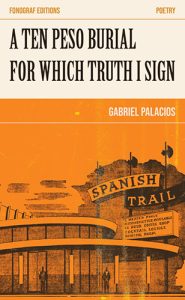The Hudson Review – Spring 2012
Volume 65 Number 1
Spring 2012
Quarterly
Julie J. Nichols
The Hudson Review is more thoroughly an academic/cultural review journal than many of the magazines reviewed at NewPages. Its essays, “Chronicles,” “Comments,” and the six pieces actually categorized as “Reviews,” are all provocative, erudite reviews of literature and the arts, aimed at an audience of well-educated, well-informed critics equal in measure to the authors themselves. This is a serious, high-minded journal well worth your time if your interests include analysis of the dramatic verse of Ben Jonson, the music of Philip Glass, or the autobiographical fiction of Gregor von Rezzori. Flawlessly edited and professionally impeccable, the writing here is secular, humanistic, and strong.
The Hudson Review is more thoroughly an academic/cultural review journal than many of the magazines reviewed at NewPages. Its essays, “Chronicles,” “Comments,” and the six pieces actually categorized as “Reviews,” are all provocative, erudite reviews of literature and the arts, aimed at an audience of well-educated, well-informed critics equal in measure to the authors themselves. This is a serious, high-minded journal well worth your time if your interests include analysis of the dramatic verse of Ben Jonson, the music of Philip Glass, or the autobiographical fiction of Gregor von Rezzori. Flawlessly edited and professionally impeccable, the writing here is secular, humanistic, and strong.
Harold Fromm, coeditor of one of the first anthologies of ecocriticism and author of this issue’s meaty essay “How We Became So Beautiful and Bright: Deep History and Evolutionary Anthropology,” is a regular at THR. His contribution to this issue synthesizes three books “exploring different ramifications of the enlarged perspectives provided by anthropology, archaeology, philosophy, and the hard sciences” for the phenomenon called “deep history.” The three volumes include Andrew Shyrock and Daniel Smail Lord’s Deep History: The Architecture of Past and Present; Robert G. Bednarik’s The Human Condition; and Daniel E. Lieberman’s The Evolution of the Human Head.
Fromm’s synthesis shows how, according to these texts, not only has the very chronology of human history been radically altered by increasingly specialized technology and method but so has scientific understanding of the relations between such heretofore segregated activities and areas of study as cooking, “cognition, diet, locomotion, speech, language, social networks, creativity and other forces that fall partly into the categories of cultural and environmental.” Fromm is enthusiastic about the implications; the nontextual evidence regarding the role of art and symbolic cognition in the evolution of human consciousness leads him to concur, with Bednarik, that our “beauty and brightness” is a “gradual process of both physical and mental evolution.” Like the texts it synthesizes, the essay is dense with new theories, new data, and new conclusions regarding our human condition. Read it—study it—for the pleasure of a potential major paradigm shift.
William H. Pritchard, another THR regular, discusses many critics on Ben Jonson’s dramatic poetry—T.S. Eliot, Edmund Wilson, Anne Barton, Ivor Winters, Stanley Fish—all in service to his balanced, informative review of Ian Donaldson’s new biography. David Mason provides an admiring overview of Ambrose Bierce’s short works, including “An Occurrence at Owl Creek Bridge” but encompassing much more, that tempts me to revisit Mark Twain’s lesser-known contemporary.
Mason also contributes poetry (“Earth, we cannot cling to you any more / than to each other. The life already over / is the one we love”) as do eight other fine poets. Of these, I especially liked Cally Conan-Davies’s “Under the Sun” (a not-so-simple nine-line image of beach undress in rhyme) and Deborah Warren’s cynical take on the wizened Sleeping Beauty. Asako Serizawa’s agonizing story of postwar Japan, thrumming of desperation, rounds out the main features of this issue.
The remaining half is printed in a smaller, closer font, and includes a considerable review by musicologist Gavin Plumley of Philip Glass’s 9th Symphony, its history, influences, and effects; reviews of three films that “play with archetypes,” by Brooke Allen; a layered, knowledgeable comparison of two recent productions of Hamlet by internationally-known drama expert Richard Hornby; and R. S. Gwynn’s negative review of the new Penguin Anthology of Twentieth-Century American Poetry, substantially supported by example and allusion.
And this is far from all. Two letters to “H,” one from London (by John Spurling), the other from Beijing (by Guy Sorman), bring THR up to date on significant cultural and historical developments in their respective cities. Further reviews analyze new translations of the poetry of Eugenio Montale and William Carlos Williams, the film version of My Dog Tulip, and the fiction of Bukovina-born Gregor von Rezzori.
But best of all is the article by long-time reviewer and editor Alan Davis of new works by Jack Driscoll, Jim Harrison, Ann Beattie, José Saramago, and Alan Lightman. Davis’s judgments resonate with good taste and pleasure; his transitions are tight; his quotations send us scurrying to buy the books. (From Ann Beattie: “Writers live an odd life, in which they face forward while spending much time looking back . . . When you meet them, they often seem remote.”)
Make no mistake: if you choose to read this or any issue of the savvy and trustworthy Hudson Review, you elect yourself a diligent partaker in the world of art, literature, and thought. Tread carefully. You may not be able to extricate yourself.
[www.hudsonreview.com]




